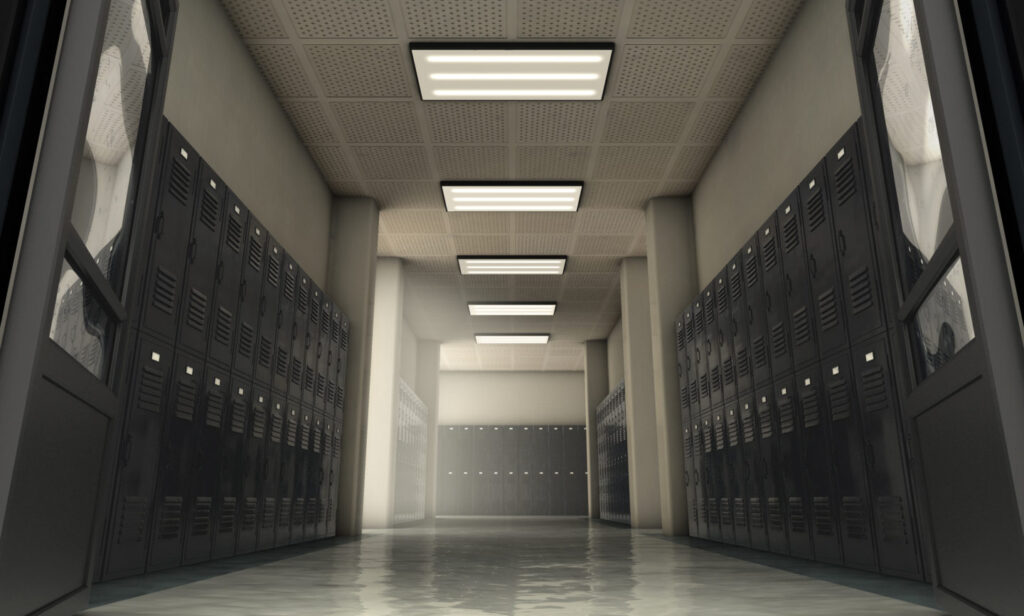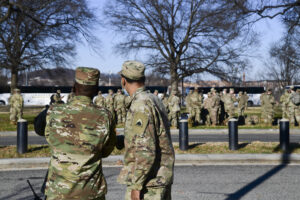‘I’d rather be home’: Brawl at Massachusetts high school draws blood, community outrage
A Massachusetts community has had enough of student violence after two educators were banged up and bloodied during brawls.
Multiple students were involved in a fight at Revere High School (RHS)…

A Massachusetts community has had enough of student violence after two educators were banged up and bloodied during brawls.
Multiple students were involved in a fight at Revere High School (RHS) on Wednesday in which a school staff member tried to intervene and had his arm scraped against a locker, drawing blood.
“I was kind of like not even shocked about it because of how many fights have been happening lately,” said Ava Yelmokas, an RHS senior.
“I was very scared,” recalled teacher Michelle Ervin. “And after it all happened, I was angry that this is still happening.”
Just two weeks earlier, another fight led to the assistant principal receiving a head injury and being taken to the hospital. The brawl even spilled out onto the road, causing gridlock.
The excessive fighting is making learning difficult for other students as well.
“I love this building,” said junior Santo Martell, “but when it gets like this, I really don’t want to be here anymore. I’d rather be home.”
Revere Mayor Patrick Keefe released a statement Wednesday pledging the school would get a fourth school resource officer.
“While our model is to educate, we hear families and staff loud and clear,” Keefe said in his statement. “Students who cause trouble in our schools will be disciplined accordingly, and those who endanger themselves and others will face the highest consequences.”
RHS also partners with the local police department’s behavioral health unit and Roca, a group seeking to curb urban violence, “to provide the clinical and social-emotional support we believe can be a root cause of many incidents.”
The district decided to suspend or expel 12 students involved in the recent fights. However, not everyone is confident the problem is being solved with an extra security officer.
“Those are good steps, but bringing in one person is not going to solve the problem,” said parent Tim Watson.
The Revere school district has also been criticized by Parents Defending Education (PDE) for including liberal “restorative justice” practices in its discipline policies.
According to PDE, restorative justice is broadly understood as “an approach to justice where one of the responses to a misdeed, broken rule or actual crime is to organize a meeting between the victim and the offender.
“In restorative justice, reconciliation, not punishment, is the goal. The ‘Western’ view of crime and punishment is thought to be a byproduct of colonialism.”
The popularization of such practices traces back to 2014, when the Obama administration threatened school districts with federal investigations if their data showed a “disparate impact” – higher rates of discipline for students of certain races.
President Donald Trump repealed the policy in 2018, only to have the Biden administration reinstate it.
Between 2013 and 2018, national suspension rates went down by 6% and expulsions by 9%. But the rates for white students stayed virtually the same.
Black students were suspended 10% less but expelled 11% more, and Hispanic students were suspended 12.5% less but expelled 6.6% more.
On the other hand, other demographics, such as multiracial or Native American students, had increased suspension rates but decreased expulsion rates.
And while that data seems mixed, the outcomes for students were not: According to the Department of Education, those years saw a 42% increase in sexual violence. Other evidence from 2009-20 showed an increase in student racial/ethnic tensions and “widespread disorder in classrooms.”
The same data found rates of cyberbullying had doubled, as had students verbally and nonverbally abusing teachers.
“[Restorative justice has] been shown to erode school culture, teacher morale, and a sense of safety in schools,” Erika Sanzi, director of outreach at PDE, previously told The Lion.
“We need to move away from prioritizing the perpetrator of the bad behavior over the classrooms full of kids who are ready to learn,” she concluded. “Teachers feel unsupported and too many students are trapped in chronically disruptive classrooms.”



